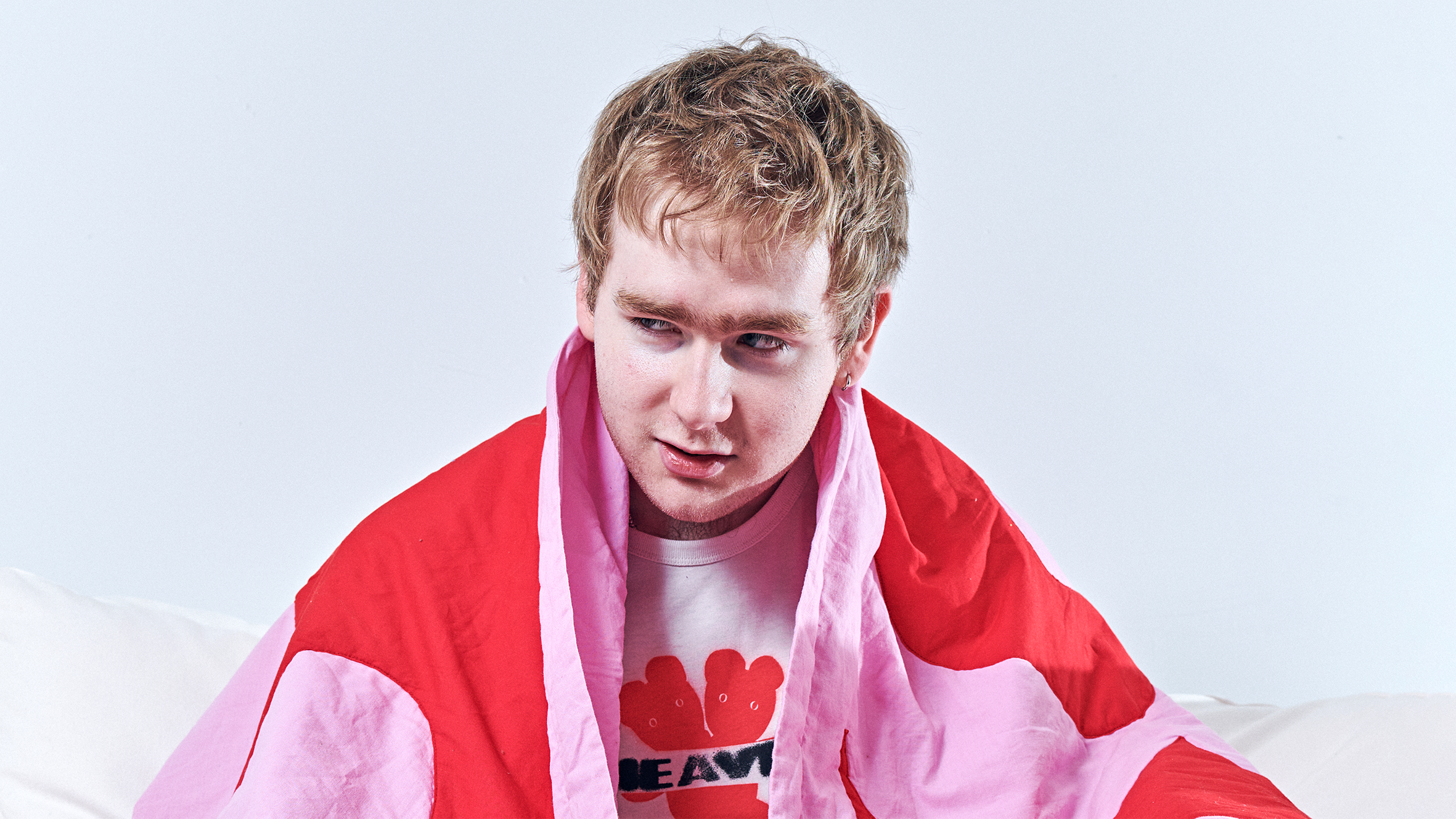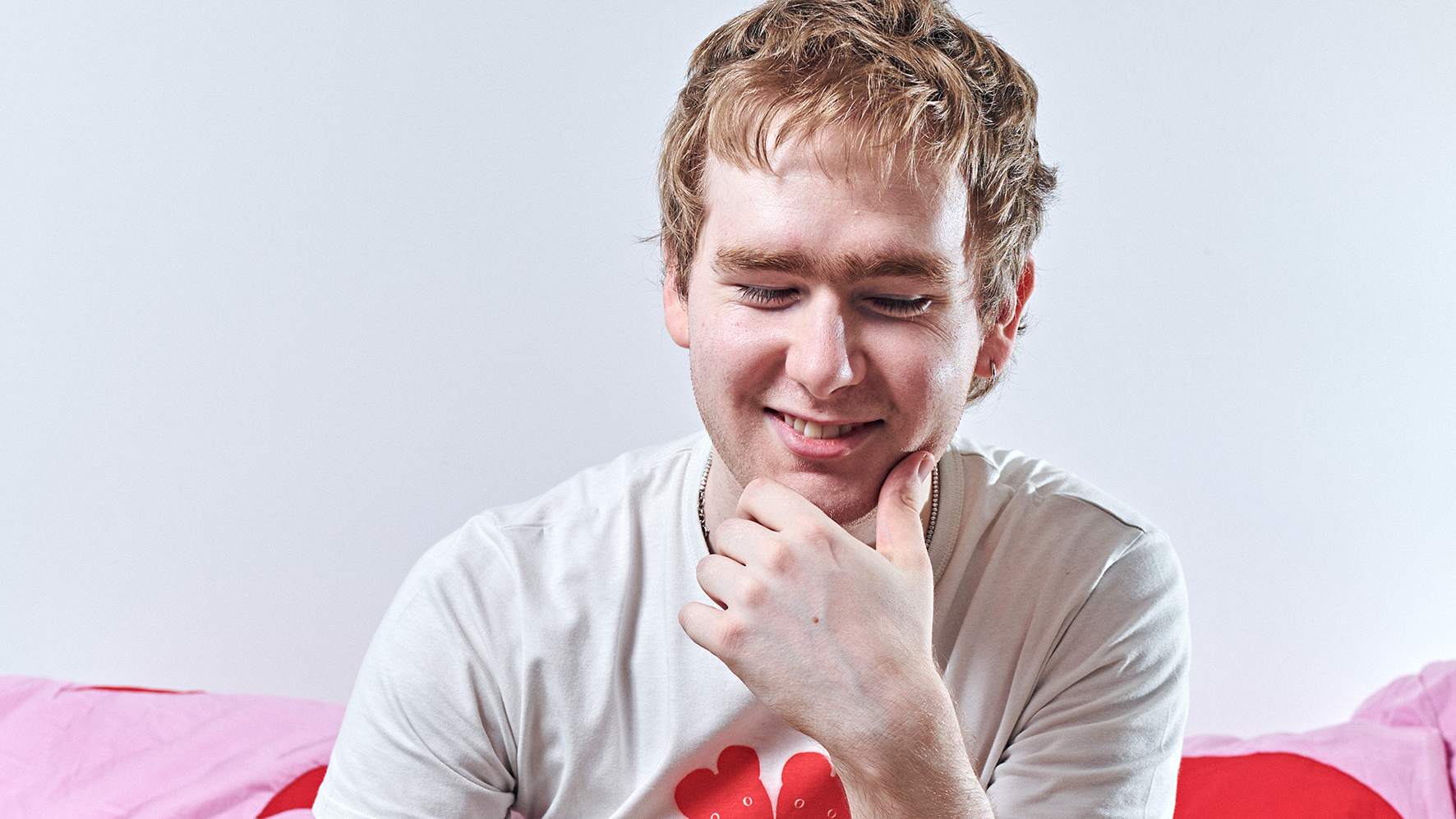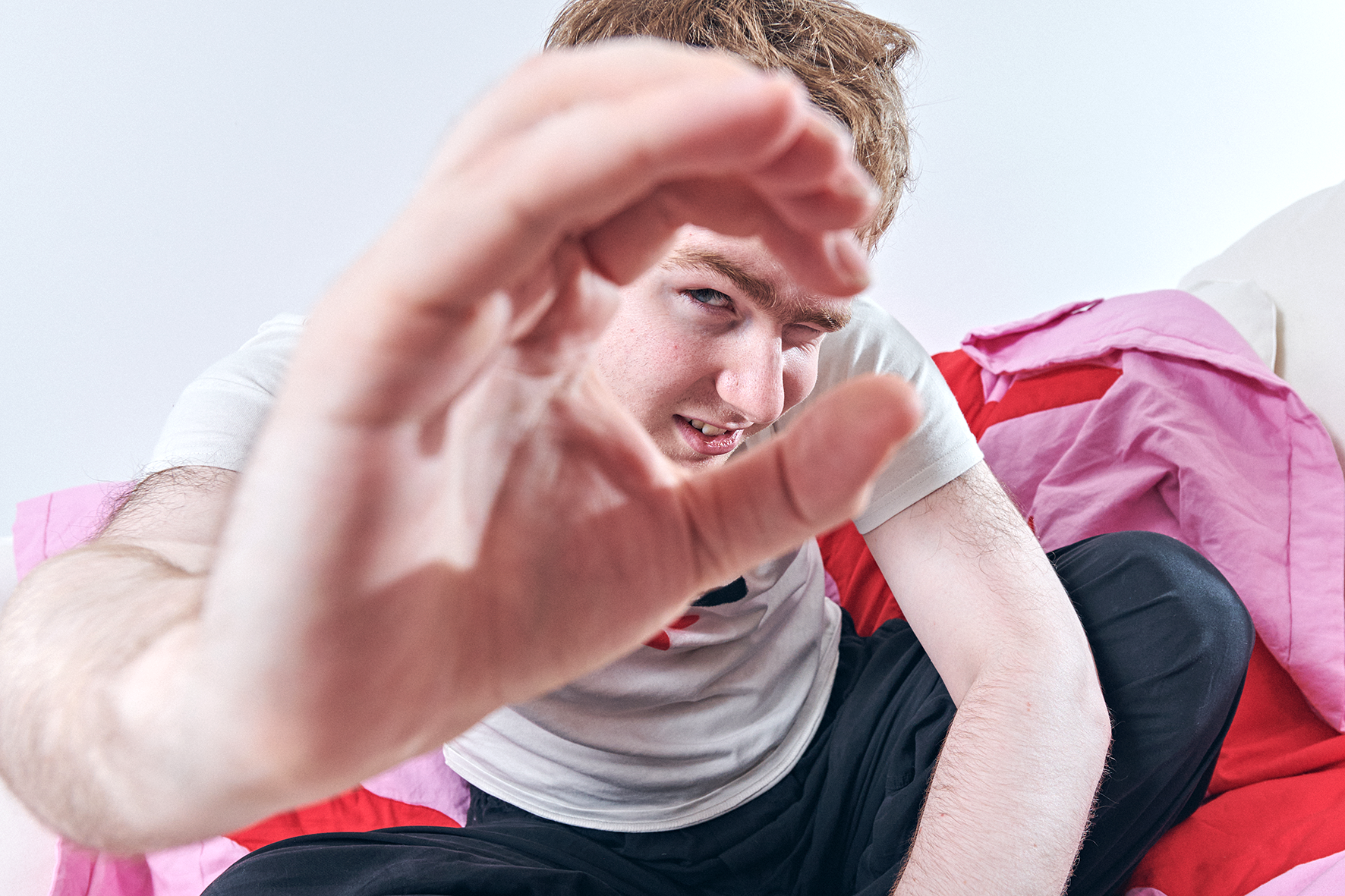Mura Masa talks us through every track on his new album, demon time
The Grammy-winning producer reveals the studio secrets behind his mischievous, feature-packed new project

Last week, we visited Mura Masa in the studio to find out more about the making of his mischievous, feature-packed new album, demon time.
Today, the producer talks us through each track on the record in detail, digging deep into the gear, software and studio techniques behind every song.
1. demon time - Mura Masa & BAYLI
Starting with “demon time”, is that a car exhaust you’ve sampled on the beat?
“I believe it's a motorcycle. It sounds like a car because I’ve de-pitched it a little bit. That whole thing just comes from that early Pharrell, sound effects-driven boom-bap in the early noughties. I think that's my favourite beat that I've ever made. It was one of the first demon time things.
“It’s a surprisingly simple track. There's only seven or eight tracks. Because the main loop, the bass with the bleeps above it, that's all Moog DFAM. That came out of one of these 20-minute tinkering sessions, and this rhythm emerged out of nowhere. Resampling that, chopping it up.

“I had a big drum rack full of stuff that I had already pre-approved and was able to just go in and like very improvisationally slap together. I wrote the hook on that one. BAYLI, she came through with her amazing verses, but there wasn’t really a chorus jumping out, and then it occurred to me: it’s demon time. I whispered it into my phone and sent her a voice note. There’s a really funny version out there of me doing my best BAYLI impression.
“I felt that deserved to be the title track just because that beat to me feels the most embodied. It's mischievous, electronic, shiny, but a bit gritty.”
Get the MusicRadar Newsletter
Want all the hottest music and gear news, reviews, deals, features and more, direct to your inbox? Sign up here.
2. bbycakes (ft. Shygirl) - Mura Masa, Lil Uzi Vert & PinkPantheress
Moving on to “bbycakes”, where did the idea come from to interpolate the 3 of a Kind track?
“I was listening to it sped up on some CDJs, and I realised, if you put a drill beat behind this it would sound incredible. That was actually the very first time during the lockdown that I felt myself having fun coming up with an idea for music. I thought I was just messing around and making an edit that I was going to use for DJ sets. Then I put a drill acapella over it, and that became the thread that I followed for the rest of the album.”
“It was also really important to put Uzi on there, because of the fun juxtaposition of this super revolutionary American rap artist, who’s punky but also kind of cute, juxtaposed with this classic UK garage hit that he probably had never heard before. That was another revelatory moment in the process.
“Another key part of the process was getting 3 of a Kind to sign off, not just in terms of clearing the sample, but I wanted them to actually be on board with what it was about. That's the one that's been around the longest and took the longest to put together. Getting hold of Uzi, convincing Pinkpantheress and Shygirl to hop on also.”
3. slomo - Mura Masa, Tohji & Midas the Jagaban
“slomo” is a good opportunity to ask about your approach to vocal processing. What drew you towards that heavily manipulated sound?
“That one has a bizarre vocal on it! [laughs] Actually, mixing-wise, that one was the most of a process because it's such an aggressive track. In terms of the vocal sound, it was tricky because it came out of an improvised string of lines that Midas came out with.
“She's known for Afrobeats stuff, and we were toying around with that. Then I was like, what do you really want to do, though? She was saying, I want to make all kinds of music, I don't want to get boxed into the Afrobeats thing. We were talking about rage music, Playboi Carti-esque rage beat stuff. Then we made this in about an hour and it just felt very fun and spontaneous.
“Because of the improvisational nature of the vocal take, there was a lot of headphone bleed and it took a lot of processing. Nathan Boddy, my mix engineer, me and him worked quite closely on that one and went back and forth a lot. There's a lot of Revoice and crazy X-Noise processing and things like that. She basically sounds like a robot, and Tohji tried to match the vocal sound.”
4. 2gether - Mura Masa & Gretel Hänlyn
On “2gether”, that stuttered synth sound stands out to me as one of the most powerful moments on the album. How did you make that?
“I don’t know if any MusicRadar readers are big TikTok fans, but there's a breakdown of this track on there. The start of that was, I was half playing Metal Gear Solid, half messing around on the Novation AFX Station. I just started recording and playing with the tempo, and the rate of the LFO on the opening and closing of the filter. Again, I did a very long take of lots of arrhythmic weird stuff. Then went back over it as I would a vocal, and created this pattern.
“A really interesting part of that song is actually the vocaloid saying ‘together’. That took a long time to do. It’s like seven or eight individual sounds pieced together, and made in Massive, or Sylenth or something. I made loads of short individual bits to make up the phonetics. But everyone probably just thinks it’s someone saying ‘together’.”
“2gether was written on guitar, and it was a lot faster originally. Like a Daft Punk, “Digital Love” style. But it ended up taking the form of this wonky, grungey thing. It doesn’t really fit into a category, which is how I know that I like it.”
5. up all week - Mura Masa & Slowthai
We love the distortion and saturation on “up all week”. What’s your go-to technique for achieving that kind of sound?
“I like piling distortion on something and really fiddling with the parameters and turning everything up to 10, and then kind of working backwards to reign it in. It’s usually a post-processing thing, or a reamping thing. My distortion idol is Jack White. He gets the most interesting clicky broken up sounds. I’m a huge White Stripes fan, and I really love The Raconteurs as well. I'm always going for that satisfying bee-buzzing broken up sound, so you can hear the individual clicks the sound.
“For that song specifically, that main synth patch is a Massive patch, and I think it probably uses some of the Brauner Tube distortion in the VST, but then probably run through Decapitator, the SoundToys one, then Devil-Loc, with a limiter on the end of it. But still, going back over it and taming it after I make it too horrible.”

6. prada (i like it) - Mura Masa & LEILAH
Moving on to “prada (i like it)”...
“That’s one of the more real-sounding songs on the album, the bassline especially. That emerged out of a desire to do a vogue-y house thing that seems to be very popular now, post-Beyonce album.
“There’s an interesting synth that’s part of the chorus that’s one example of hyper-destructive resampling, where it started as a regular synth patch, got frozen down in Ableton, frozen again with a bit of TAILS on it, then put into a granulator, resampled again, put into a sampler then enveloped to get the shape of how it pulses.
“That's very unusual for how I would normally work, because that's quite a process, and I try to minimise that. But I just found myself reiterating it again and again. What you get at the end of it is a very bizarre sound. I think people should be having more fun like that, and if it sounds like nothing on earth that you’ve ever heard, that’s probably a good thing.
7. hollaback bitch - Mura Masa, Shygirl & Channel Tres
“hollaback bitch” has a real deep house vibe to it. Was that your intention on this one?
“Definitely Detroit house, and vocal samples. That was one that I wrote a lot of Shygirl’s verse for, which is quite funny. Imagine me coming out with that. But it's fun to like, put words into her mouth that she feels good saying and that sound like her. That was my Pharrell moment, where the whole song was constructed and I took it to her.
“It was actually at a writing camp for her album. That’s probably one of my favourites on the album. Again, very minimalist, it’s basically just a bassline, a clap, maybe a synth here and there. And a banging saxophone. I’ve become quite practiced at not throwing a bunch of shit at things, and really being sensitive like - something needs to go here, but I need to be careful about not overegging it. That was the case with that one.”
8. blessing me - Mura Masa, Pa Salieu & Skillibeng
“blessing me” is a good chance to ask about your approach to bass…
“Again, a super minimal approach where it started with the baseline, which is just an 808 sample. I think it's a SOPHIE 808, thrown into a sampler. I'm a big fan of imagining that mixing a song is like packing a bunch of stuff into the back of a van. Everything occupies a certain space in the van, the bass being the big objects that need the most room.
“When I'm mixing, I'm quite often shelving stuff and completely separating all the parts so there's not much overlap or interference. That's actually something that Skrillex got me on to. I’d always had that approach, but watching how far he took it, with extreme shelves on things. So it’s just blocks that occupy separate spaces. I’m always making room for the bass. Also, sidechaining so that things are getting out of the way - I’m a big fan of that.”
9. tonto - Mura Masa & Isabella Lovestory
On “tonto”, is that an accordion? Did you play that yourself?
“It's a harmonium, which is a little organ. I did play it myself. It's an interpolation of a weird underground cumbia song that I love, called Cumbia Del Tornado, by Los Daddys. Me and my friend Isabella, she's Honduran, we were trading Latin music. We came across that and I was like, actually, I've always wanted to interpolate this and make it into something else. It’s quite flowery track, I love that melody. I was obsessed with it for weeks and weeks.”
“It took a second to record it correctly, because the way the harmonium works is you have to pump the air consistently with one hand and then play with the other one. There's a lot of mechanical noises and wood hitting each other and that sort of thing. I wanted a little bit of that, but not as much as was coming out. It took a second to actually record it.”
10. e-motions - Mura Masa & Erika De Casier
“e-motions” really captures that vocal-led, smooth UK garage sound. What is it that inspires you about that style?
“It goes back to what I was saying about pop music before, where there's that balance between simplicity and elegance, and understandability. Also a bit of nuance, and something a bit interesting. The bassline existed before that main part, and it was something that we arrived at together naturally. But me and Erika [de Casier], we really didn't spend long writing that song, we just let it happen naturally.
“That's what I love about garage, actually, because it's emergent out of club music and the underground, so there's quite an intensity to it. But the journey it took as a genre, it became like easy listening or something. It adapted in a weird way. I’m a big fan of Craig David, but you could argue that was the end of garage, when he properly popularized it. Maybe I shouldn’t have said that. [laughs]”
11. blush - Mura Masa
What made you settle on “blush” as the final track on the album?
“That actually wasn't originally the last track on the album, there was another track. Normally I go for a more emotional note at the end and a nice, full stop on the end of an album. There was a track that had about it, a jungle track, an emotional one. Long story short, it wasn't able to be put on the album.
“So I was left with a gap at the end of the album, and I thought, well, like, “e-motions” is nice, but it doesn't quite go out the way I want. Then I thought, well, actually, if we're eschewing the expectation of what I'm supposed to be doing anyway, why not end on possibly the dirtiest, poppiest thing on the whole album?
“It’s a very raise-your-cups type of beat, and it ends quite suddenly, with no fanfare. I came to like that idea. That’s the idea behind the whole album. Don’t overthink it too much - it’s meant to be fun.”



I'm MusicRadar's Tech Editor, working across everything from product news and gear-focused features to artist interviews and tech tutorials. I love electronic music and I'm perpetually fascinated by the tools we use to make it. When I'm not behind my laptop keyboard, you'll probably find me behind a MIDI keyboard, carefully crafting the beginnings of another project that I'll ultimately abandon to the creative graveyard that is my overstuffed hard drive.
“I’m looking forward to breaking it in on stage”: Mustard will be headlining at Coachella tonight with a very exclusive Native Instruments Maschine MK3, and there’s custom yellow Kontrol S49 MIDI keyboard, too
“Turns out they weigh more than I thought... #tornthisway”: Mark Ronson injures himself trying to move a stage monitor









